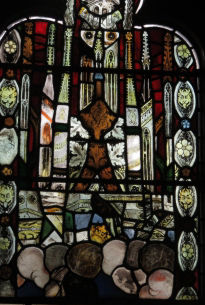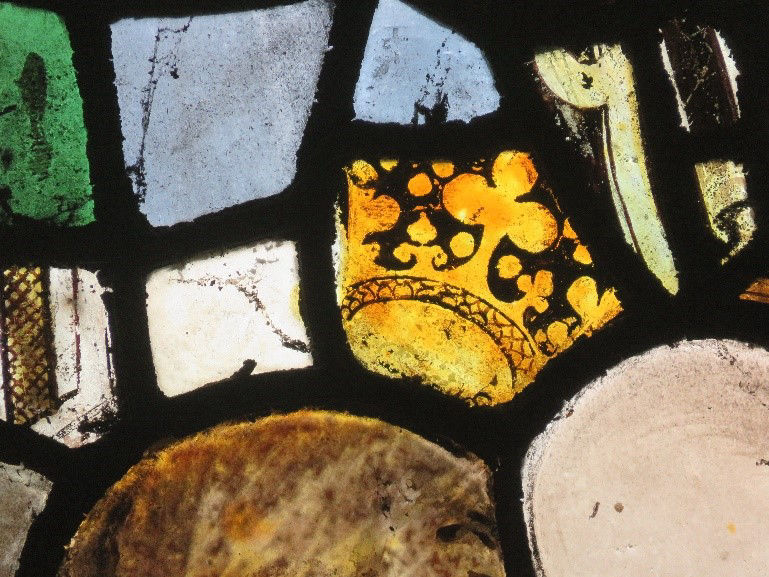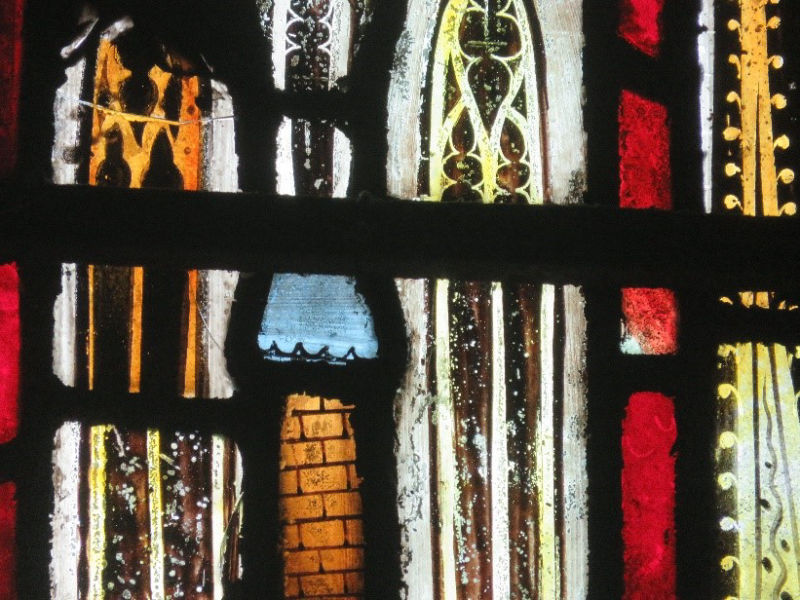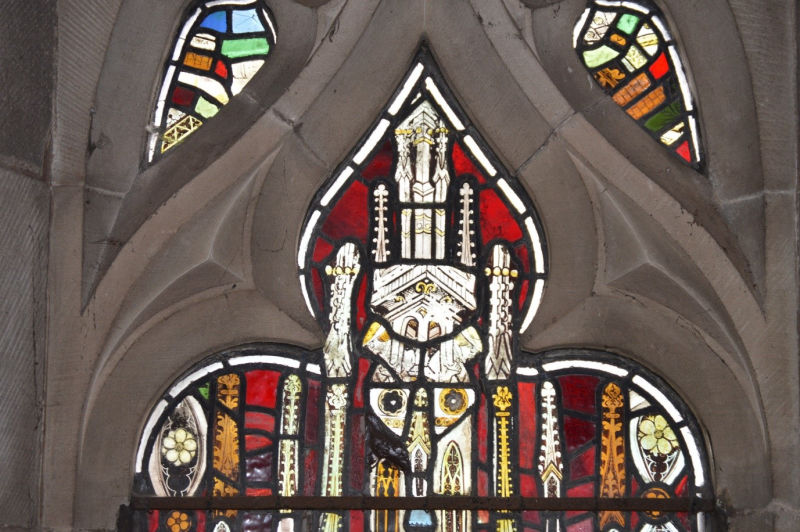



We now know that Keele’s stained and painted medieval window is unique, but its location in a Victorian Gothic parish church has meant that it has been completely overlooked- until now. It is an example of how historical gems can still be discovered from time to time in unlikely places. Keele was founded in the twelfth century by the Knights Templar. By the thirteenth century they held lands locally in at least three counties and deployed their resources to protect crusaders going to the Holy Land. The fortunes of the Templars were inextricably bound up with the crusades; in the thirteenth century, and until 1307, the Templars were at the forefront of all crusading enterprises.
After the Order’s fall from grace after 1308, the artefacts associated with them and the buildings of the Knights Templar houses were generally torn down and destroyed by their principal rivals, the Knights Hospitaller. The pope ordered the transfer of Templar property to their rivals, the Knights Hopitaller; soon little evidence of their one time dominance in crusading circles remained. The Hospitallers remodelled their churches and threw out reminders of the Templar presence whenever they could.
Although there are exceptions, such as Cressing (Essex) and the New Temple in London, for the most part the Templars can be recalled only through the chance survival of fragments of their buildings – a tower at Temple Hirst (Yorkshire), for instance, or a dovecote at Garway (Herefordshire), much was demolished after 1308. At Keele, the chapel attached to the preceptory continued in a dilapidated condition throughout the middle ages. The preceptory’s other buildings were converted to secular use or taken down stone by stone, while the chapel was itself demolished in the later nineteenth century – except for a single window containing what remained of its distinguished and very early medieval stained and painted glass. The survival of this single window light at Keele, requires explanation.
Robin Studd’s book, Keele’s Templar Window and the Templars Jacques de Molay and Thomas Totty (North Staffs Press, 2018) (available direct from the author) demonstrates when, how and why this happened here. He has been able to show how the fragments of the window that survive are identifiable as coming, not from elsewhere in England- or France, as one might reasonably expect of thirteenth-century medieval glass but are examples of a strong medieval tradition of glass painting found in the vicinity of Barcelona and in the Pyrenees, in the region then known as Aragon, where the Knights Templar flourished under the protection of its king.
What is also unusual about Keele’s medieval window is that it can be dated fairly precisely. It is rare that such a case can be made for medieval glass, especially for glass as early as Keele’s. What we know is that the window was the gift to the Keele preceptory by Jacques de Molay, the newly installed Grand Master of the Templar Order in 1292, who made similar gifts to other European bodies, and who brought the window with him when he visited England shortly after his installation. It was part of a charm offensive to persuade the English to support a campaign for a new crusade to the Holy Land. Although the window has at its heart, an image of the Assumption of the Virgin, (linked to the celebration the principal feast day of the Templars), it is principally a paean of praise to crusading and its imagery of multiple towers and construction work is intended to convey the urgency of the construction physically and metaphorically of buildings representing the New Jerusalem promised in Holy Writ.
The window is the work of continental European glaziers working in the hinterland of Barcelona where a thriving industry in medieval glass making existed from the eleventh century at least. And in Keele’s window there are very significant representations of medieval masons at work, Here we see two members of a medieval craft guild (actually they are Templar lay brethren) building a tower which closely resembles several structures which still stand today in this area of north eastern Spain close to the Pyreneean frontier.
The window was intended to be set up in a Templar chapel in England, but the only English element present in the window is to be found in the two parallel friezes of alternating lions’ heads and ballflowers found running up the edge of each side. The contention here is that this is infilling material to enable the window glass to fit together accurately and was the particular contribution of Cheshire glaziers commissioned to fill the space between the window uprights and the Aragonese glazing work. There is little difference in date between the Aragonese and the Cheshire glazing work; both date from about 1292/3 and we know from other sources that the window was in place at Keele by 1296.
The window is fascinating to study. Questions are raised every time the window is inspected in detail, and there are still conundrums to be resolved.